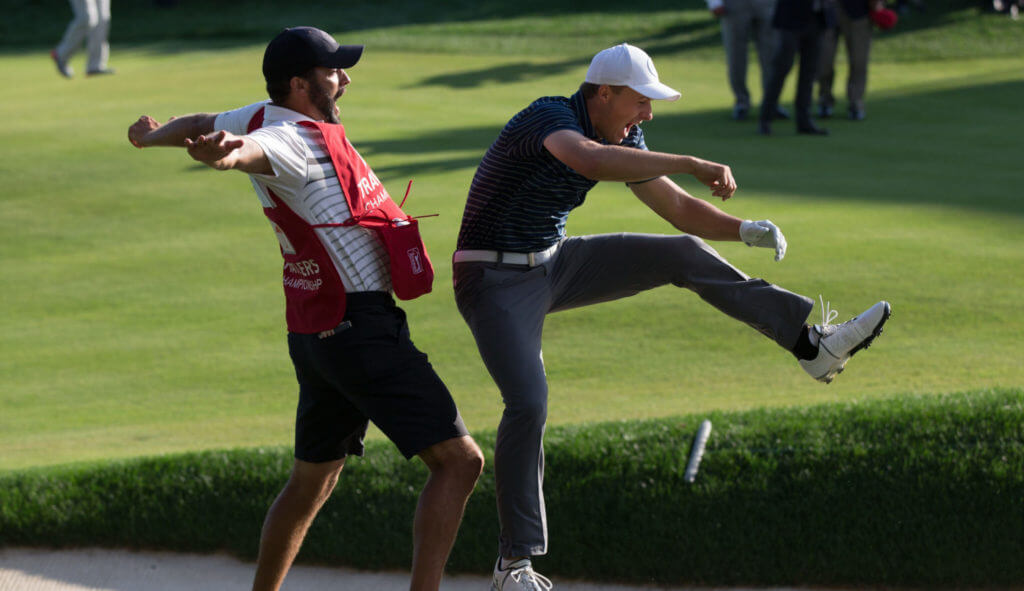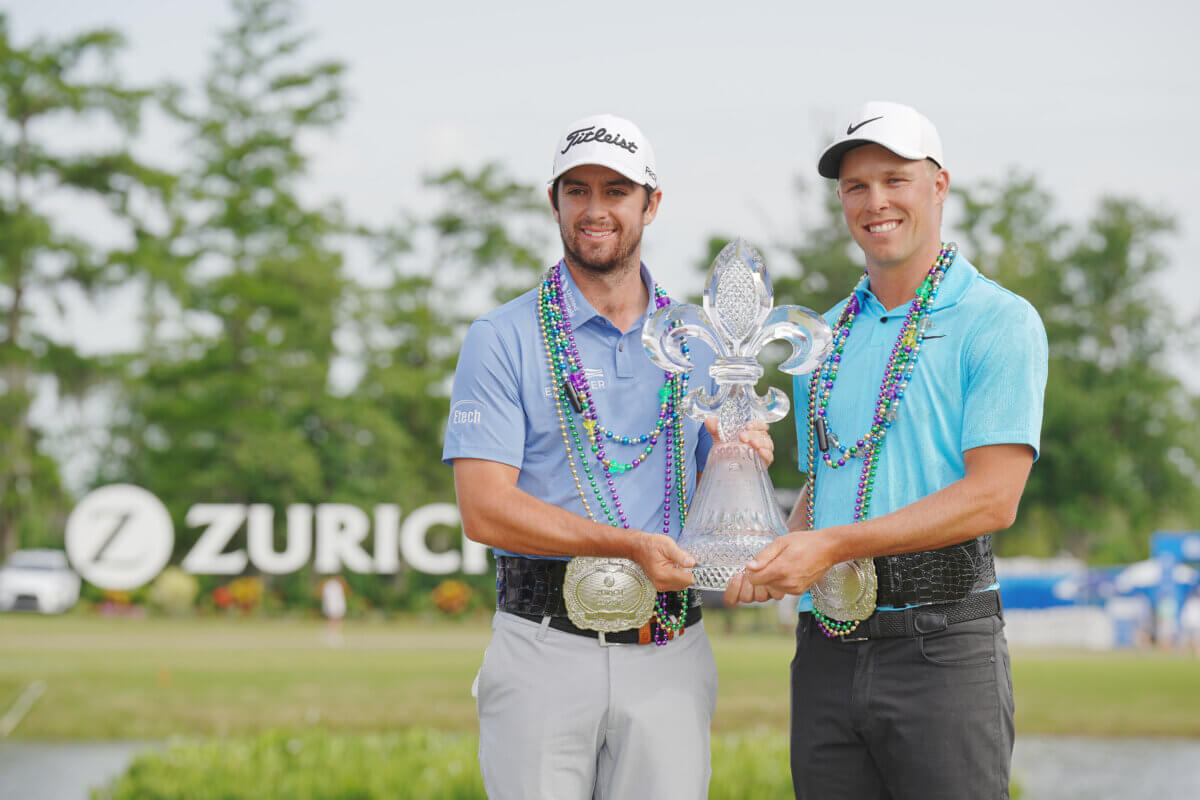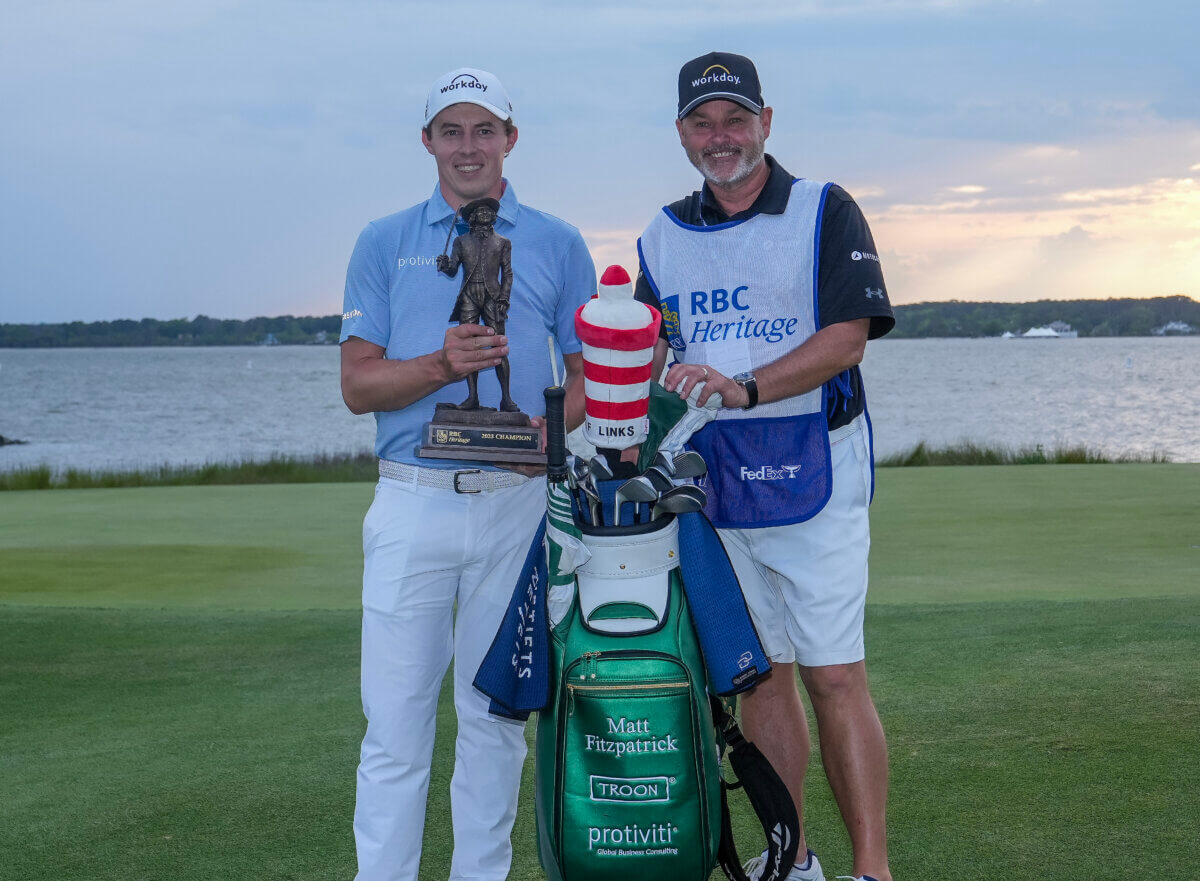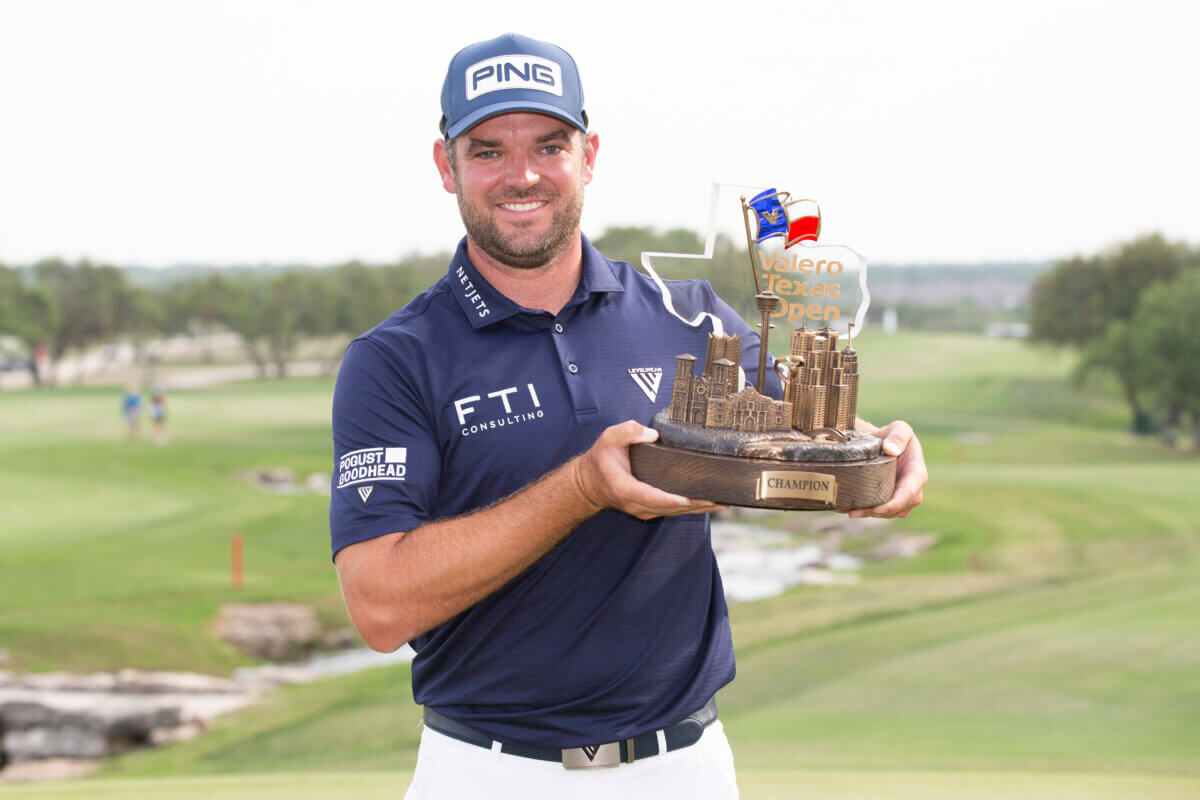Hawk’s Eye: Botched player/caddie celebrations always a good laugh

When Tiger Woods and Steve Williams shared an emotional embrace at the conclusion of the 2006 British Open, the world was provided with 15 seconds of visual evidence that Tiger was indeed human. The sight of the world’s best golfer weeping in his caddie’s arms was an everlasting one — almost as unforgettable as the yellow trousers worn by Sergio Garcia that afternoon.
The triumph at Royal Liverpool was Woods’ 11th major title but the first since the death of his father two months earlier. He would gather himself for the trophy ceremony and even bring his wife, Elin, to the media center for his post-victory press conference.
Those invites were as rare as Sergio’s canary-colored britches.
Williams, of course, was Tiger’s BFF in those days, a constant and sometimes cantankerous presence who repeatedly patted his man on the back during the lengthy hug. He would point to the sky as the two men walked off the 18th green, as if to say, “Earl, this one’s for you,” providing the tender moment with an indelible exclamation point.
It remains perhaps the most memorable player-caddie celebration in golf history, so real and righteous, two words rarely used to describe Woods at any point in his stellar career. Back in the day, when men were men, caddies were given an old-school handshake and orders to make sure the clubs arrived safely at the next tournament. The bro-hug, however, changed everything.
We don’t see nearly as many wives and kids trotting out to congratulate dad nowadays, perhaps because he’s immersed in some sweaty clinch with the dude who gave him yardage all afternoon.
The evolution of the chest-bump also comes into play. Not only did Jordan Spieth hole a bunker shot in sudden death to win the 2017 Travelers Championship, he had the presence of mind to behave like an overstimulated game-show contestant at the precise moment of victory. Spieth flung his sand wedge skyward as he exited the greenside hazard, then scaled a fairly steep mound to engage in some mid-air body contact with caddie Michael Greller.
“I was actually surprised by the jubilation from Michael,” Spieth would say. “He’s pretty reserved. Normally, he’d just raise his arms or something, but he screamed and it made me want to scream louder, and then he jumped.”
Sort of. This wasn’t Dominique Wilkins meeting David Thompson at the summit, but Spieth and Greller managed to leave the ground for a fraction of a second, long enough for Spieth to turn and brush Greller with his backside. And some people think golfers aren’t athletes.
Phil Mickelson exhibited a similar lack of verticality upon winning the 2004 Masters, which is probably why most golfers prefer to remain grounded during a victory salutation. The caddie’s job is to react accordingly, although Jerry Higginbotham failed to do so after his boss, Mark O’Meara, beat Fred Couples and David Duval by a stroke at Augusta National in 1998.
O’Meara’s 20-foot birdie putt on the 72nd hole accounted for the final margin, and when it found the cup, Higginbotham hurled his cap high in the air. A perfectly understandable response, except that Couples still had a four-footer for par — and Higginbotham’s lid landed squarely on Freddie’s putting line.
To say the least, O’Meara wasn’t amused. The good news is that Couples made the putt. The bad news is that Higginbotham was fired exactly a year later, as much for his overzealous nature as O’Meara’s belief that caddies weren’t worth the standard percentage of a player’s earnings.
Pro golf has its share of peccadillos, of course, and celebrating while play is still in progress is certainly one of them. The Ryder Cup has been known to produce the most boisterous displays of emotion, owing to its format as a team match-play event, and the fellas like to get worked up in such an intense, nationalistic atmosphere.
The most infamous incident occurred in 1999. Justin Leonard rolled in that bomb on Brookline’s 17th green and the entire U.S. traveling party charged onto the course for a group hug, oblivious to the fact that Jose Maria Olazabal had a putt from half that distance to halve the hole. It was an egregious breach of golf etiquette, something NBC on-course analyst Mark Rolfing immediately noted while the Americans were busy losing their minds.
Olazabal waited. And waited. And missed. It’s fair to say the Europeans have extracted sufficient payback in the 20 years since.
My favorite player-caddie outburst came at the very next meeting between the Yanks and Euros, at The Belfry in 2002.
“I’m 2 down standing on the 15th fairway, looking at the scoreboard, and you can tell when the whole thing is coming down to you,” Paul Azinger says. “Right away, you start getting ahead of yourself. You imagine watching them celebrate, and it kind of overwhelmed me for a moment or two.”
Azinger was facing Niclas Fasth in the eighth singles match, and things got sideways almost from the start. The Swede jacked up the crowd after holing a putt on the second green, which annoyed Azinger, who chipped in on the fifth and served up some demonstrative joy of his own. Fasth would later characterize the duel as one of “gamesmanship and a tense atmosphere,” two elements the American veteran thrived upon.
Azinger hit his second shot into the 15th, then turned to his caddie, Pat Esway. “I told him, ‘Patrick, this guy doesn’t deserve it. Whoever gets that clinching point is going to be revered, and he doesn’t deserve it. Doesn’t deserve it.’ We get to 17 and I see the European team behind the green. They’re ready to pop the cork, and I dropped an eight-footer on them.”
Fasth still led 1 up on the 18th tee, however, and when Azinger missed his approach left into a greenside bunker, it looked like curtains for Old Glory. Fasth was in perfect position to par the last and close down the Americans for the third time in four meetings.
“There’s a video of him on the back of the green, pumping his fist,” Azinger says. “Again, I’m saying to myself, ‘He doesn’t deserve it. Doesn’t deserve it.’ I looked at the board and said, ‘Patrick, this has gotta go in.’ It did, and we went bananas.”
Azinger spun around to high-five Esway — and missed. They tried again and made only marginal contact, and the third attempt wasn’t much better.
“He was going lefty and I was going righty,” Azinger adds. “That was strike one right there.”
Fasth failed to make a birdie and Azinger escaped with a halve, but strike three would soon arrive for the Americans, who would lose by three at The Belfry and have beaten the Euros just twice since ’99.
Not much to high-five about there.
All views expressed in this column are those of John Hawkins and do not necessarily reflect those of the Caddie Network.





